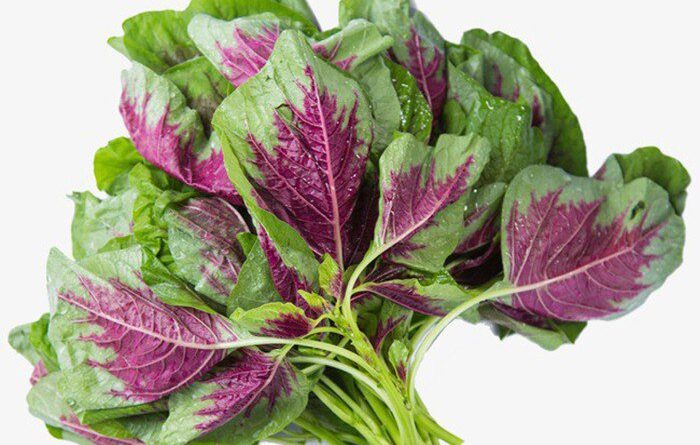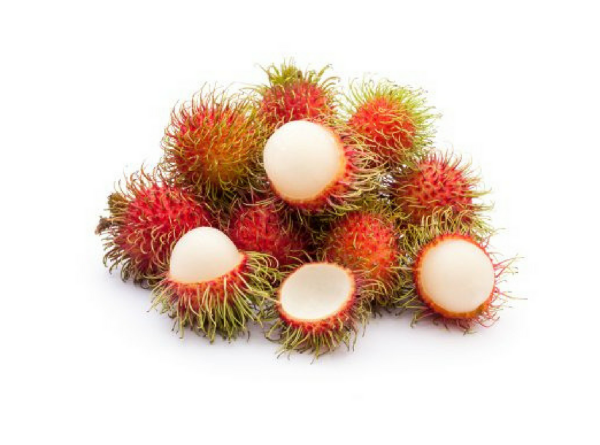
Amaranth is a popular source of phytonutrients in every family’s meal. Vegetables have a sweet, cool taste and contain many essential nutrients for the body. The iron content in amaranth is quite high. Using amaranth can help reduce inflammation, good for bones, prevent cardiovascular diseases, diabetes…
1. General information about amaranth
Amaranth is a plant. The seeds, oil and leaves are used as food. Whole parts of amaranth are used to make medicine. Amaranth is used to treat ulcers, diarrhea, swelling of the mouth or throat, and high cholesterol, but there is no good scientific evidence to support these uses.
Amaranth contains beneficial substances such as antioxidants. There is interest in using amaranth to treat high cholesterol because some animal studies show that eating amaranth can lower total cholesterol and LDL cholesterol, while increasing HDL cholesterol. But eating amaranth doesn’t seem to have these benefits in humans.
Amaranth is diverse in species. In which, the most popular types are: red amaranth, rice amaranth, prickly amaranth…
- Red Amaranth: The whole leaf stem of this amaranth is burgundy, with a high water content. When amaranth is cooked, it has a bright red color that is very attractive and beautiful. This type of amaranth contains a variety of nutrients such as protein, glucide, vitamins and minerals.
- Amaranth rice: with this vegetable, there are usually flowers at the top. Most of the young tops of the plant, young leaves, young stems can be used to eat. In addition, the roots, tubers, and stems can be used as traditional medicine because the nutrients in these locations are quite good for the body’s activities.
- Spiny amaranth: This type of amaranth often grows in wild places or abandoned lands. With this plant has drought tolerance, good water resistance and high germination ability in not completely favorable conditions.

Amaranth contains beneficial substances such as antioxidants
2. The effect of amaranth
In addition to the effects of cooling the liver, clearing heat, does eating amaranth have any effect? In fact, amaranth has long been known as a traditional medicine to treat many diseases such as:
2.1. Improve the quality of bones and joints
The mineral composition in amaranth is quite rich and especially beneficial for health in which the calcium content accounts for a fairly high proportion and may be higher than that of other vegetables. According to studies, the calcium content of amaranth is 3 times higher than that of spinach and 2 times higher than milk. Therefore, this vegetable is one of the superfoods with a particularly important role in helping to strengthen bones, while reducing the risk of osteoporosis and calcium deficiency-related diseases such as seizures.
2.2. Improve inflammation
A few recent studies have shown that the peptide chain in amaranth has the effect of reducing inflammation in humans, and it even plays a role in blocking the activity of free radicals. healthy cells of the body.
Symptoms of arthritis, gout or other inflammation-related problems are positively impacted by the anti-inflammatory molecules in amaranth and reduce the risk.
2.3. Benefits for diabetics
Studies have proven that eating amaranth regularly will help maintain blood sugar levels, thereby helping diabetics control their diabetes better. Moreover, this vegetable also helps to reduce the risk of diseases related to blood sugar and cholesterol levels such as overweight and obesity…

The mineral composition in amaranth is quite rich and especially beneficial for health
2.4. Improve signs of iron deficiency anemia
The iron nutritional content of amaranth is quite rich. It plays a role in increasing the amount of hemoglobin and red blood cells, helping to reduce iron deficiency anemia.
2.5. Improve the quality of the digestive system
The fiber content in amaranth is quite high and is 3 times higher than that of wheat. Therefore, regular consumption of amaranth can help improve the quality of the digestive system and help prevent constipation. In addition, cooking water from amaranth plants also works to support the treatment of symptoms of diarrhea, bleeding or dehydration.
2.6. Prevent cancer
The amino acid composition in amaranth is quite rich, especially the essential amino acid lysine. Along with minerals such as: potassium, phosphorus, magnesium, iron, vitamin C, vitamin E, amaranth plays a role in preventing free radicals caused by the aging process.
3. Some processing methods of amaranth
- Amaranth soup: you can use amaranth in combination with cooked shrimp to form a summer dish to help cool down, cool the liver, and at the same time reduce the symptoms of headaches and dizziness.
- Stir-fried red amaranth with garlic: What are the benefits of eating red amaranth? Amaranth in general and red amaranth in particular have many health benefits. For stir-fried red amaranth with garlic, in addition to providing fiber from amaranth, it also adds special nutritional components from garlic to make the dish nutritious and attractive.
- Beetroot soup: beetroot cooked with meat creates a delicious, sweet dish and has a blood-tonic effect.

The fiber content in amaranth is quite high and 3 times higher than wheat
4. Some traditional herbal remedies are often used with amaranth
- Remedy to help laxative: use 1 handful of red amaranth, clean and wash, drain. Then boil for 3 minutes. Skim the mixed vegetables with sesame oil or black sesame powder. Using this mixture to eat with rice will have a good effect on cases of constipation.
- Remedy to help improve blood pressure: use 20 grams of red amaranth, combined with 20 grams of young plantain leaves, 20 grams of mulberry leaves. Wash the whole thing and put it in the soup pot. Using this soup in daily meals helps regulate blood pressure.
- Remedy to treat heat rash and itching: use 20 grams of red amaranth along with 12 ga of honeysuckle, 16 grams of horse’s head, and 16 grams of ground herbs. All are washed, then put in a kettle with 750ml boiled to 250ml then divided into 2 times a day.
- Remedy to cure heat in postpartum women: use 50 grams of red amaranth, then wash, cut into pieces and cook to remove the residue. Use water cooked with glutinous rice to eat porridge every day.
- Remedy to clear heat, stimulate the digestive system: use 100 grams of red amaranth, 50 grams of rice amaranth, 50 grams of spinach, 50 grams of jute vegetables. Wash and cook with broth or shrimp paste for a daily soup.








